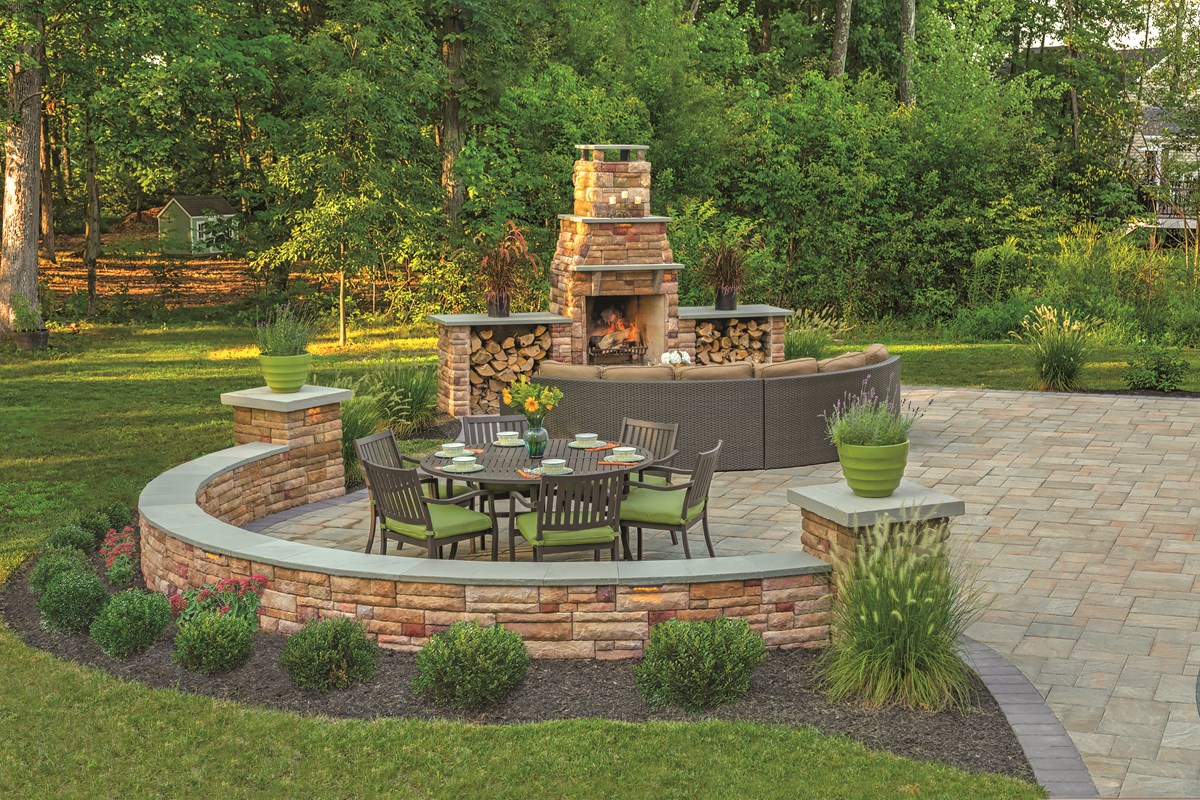The key in designing an outdoor hearth is choosing the stone that makes it sing.
A fire pit has its place, but an outdoor hearth makes an outdoor home. If you’re looking to add a fireplace to your hardscape, a few tips from the design world can help you choose the Cast Veneer Stone (CVS) that will blend in and stand out. With the right design, an outdoor hearth can be both a showpiece and a natural extension of the home.
Basic design elements are color, line, and texture. Other elements include scale and proportion, but let’s begin with the basics. Your color, line and texture choices will hold the biggest influence over the look and feel of the project.

Color
Color and mood are almost so intertwined; they can often mean the same thing. Our language is full of colors as descriptors of mood, e.g. “feeling blue” for sadness, “red hot” for passion and “green” for envy. Usually homeowners seek a stone color that complements the colors of the home’s exterior, but the mood of the stone should also be considered. Fireplaces can convey a modern feel or a classic one. They can rock a traditionalist look or emit more of a forward-thinking vibe. Beyond a simple complementary color, think of the kind of feel you want from your outdoor hearth. Perhaps the indoor fireplace is traditional and you’d like a hipper, gastro-pub aesthetic for the outdoor one.

Fireplace with Double Wood boxes and Cast Stone Wall Face Shells
Line
As with color, the lines of the CVS also affects the design of the fireplace and any surrounding hardscape elements, like low walls for seating or outdoor kitchen pieces. Line is just what is says: the edges of the stones and the whole structure. Lines can vary in thickness and can be straight, curved or more naturally haphazard. Each CVS choice has a different kind of line. Some are more modern, i.e. brick, with its human-imposed lines, and others look more like Mother Nature’s jagged-edge stones. Mixing lines can be stunning. A brick home can work with a natural looking hearth. You aren’t bound by the existing lines in your hardscape. Often in early American design the outer walls of homes were brick but the inner fireplace was natural stone, as it was better for enduring the heat of the flames. Keep your options open.

Texture
Line and texture are linked, but they aren’t the same thing. The edge of an object gives it its line, but the surface of the object holds its texture. Edges will have textures of the surface as well. Texture refers to what the surface feels and/or looks like. Textures are smooth, bumpy, indented, etc. CVS has been made to resemble real stone, and will have textures that match.
Texture is as strong as color in building an overall mood for the fireplace.

Other elements
The color, line, and texture of a stone will help you align the other design elements, like shape and scale. Outdoor fireplaces are built around pre-made kits. Some design is already decided. This makes it easier for homeowners to focus on what kind of hearth and outdoor room they want. Take a look through the various CVS choices in the catalog and visit a distributor. Pick up the samples, run your hands over them. Take them out into the sunlight at different times of day. You’ll get a sense of what will make your outdoor hearth an integral part of your home.